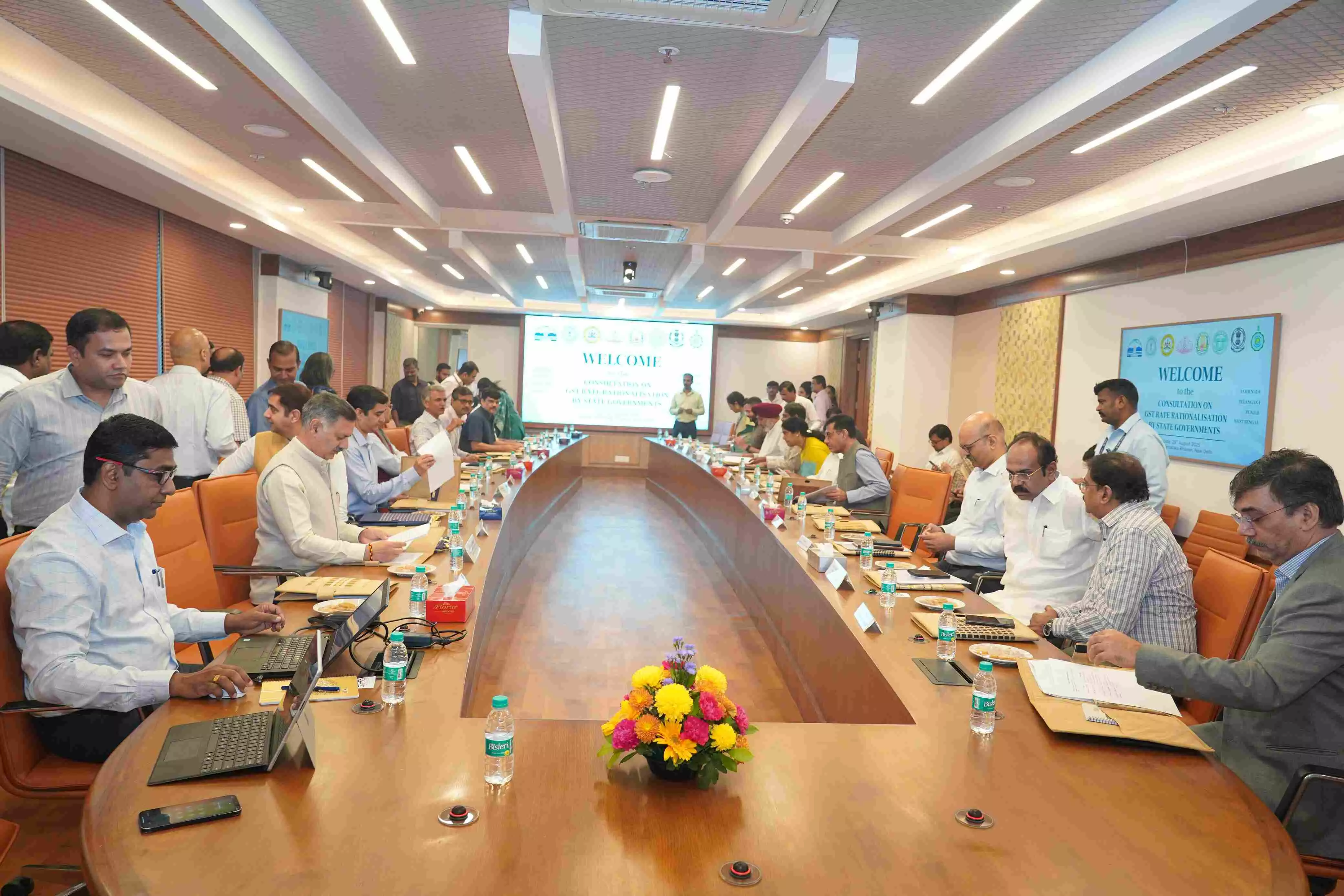
Opposition-ruled states have united to demand compensation from the Central Government when GST rates are slashed next week. Photo: The Federal
Opposition states' Finance Ministers meet in Delhi ahead of GST rate cut
Finance ministers from Karnataka, Punjab, and other states demand that the Centre compensate them for revenue shortfalls caused by the new GST framework

A crucial meeting of Finance Ministers of opposition-ruled states, including Tamil Nadu, Karnataka, Telangana, Kerala and Punjab, is being held in Delhi on Friday (August 29). The development comes at a time when opposition-ruled states have united to demand compensation from the central government when GST rates are slashed next week.
Earlier this month, the Group of Ministers on GST rate rationalisation approved the Centre's proposal to streamline India's tax structure into two primary slabs of 5 per cent and 18 per cent, eliminating the existing 12 per cent and 28 per cent rates.
Shift from the current four-tier GST
Bihar Deputy Chief Minister Samrat Choudhary, who convenes the six-member state ministerial panel, confirmed that both Centre proposals were accepted, marking a significant shift from the current four-tier GST structure, which comprises rates of 5 per cent, 12 per cent, 18 per cent, and 28 per cent.
The new framework includes provisions for a 40 per cent tax on ultra-luxury and 'sin' goods, as outlined by Uttar Pradesh Finance Minister Suresh Kumar Khanna. West Bengal Finance Minister Chandrima Bhattacharya proposed an additional levy on top of the 40 per cent rate to ensure current tax incidence on luxury items like cars and sin goods remains unchanged.
Also Read: GST rejig: These household items likely to get cheaper
Revenue loss concerns
Bhattacharya highlighted that the Centre's proposal didn't specify revenue losses that would result from implementing new GST slabs, raising concerns about fiscal impact on both central and state governments.
Currently, the GST operates as a four-tier system where food items are taxed at 0 per cent or 5 per cent, while luxury and sin goods face 28 per cent rates. Additionally, varied cess rates are levied on top of the 28 per cent slab for demerit and luxury goods, creating a complex taxation landscape.
Also Read: GoM on rate-rationalisation accepts Centre's proposal of two-slab GST of 5, 18 pc
Timeline for implementation
While the GoM has approved the structural changes, specific implementation timelines and detailed revenue impact assessments remain to be finalised. The proposal represents the most significant GST reform since the tax system's 2017 introduction, potentially affecting pricing across multiple sectors and consumer categories.

